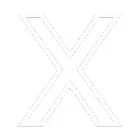his title might seem like an oxymoron – how to customise something that is meant to save time by bulk scheduling – but you can plan and automate your social media activities without losing customisation and authenticity.
In this article, we will go through some basic areas to cover to ensure your social media schedule is customised for each social channel. Since we primarily deal with B2B clients, we’re just going to focus on Twitter, LinkedIn, Facebook and Instagram as these are the most commonly used.
Image Dimensions
Let’s start with the dimensions of your image. You can get away with using the same dimensions for some combinations of social media channels but there isn’t one size that fits all. It’s also possible to use different dimensions for one social channel, so it’s best to find the right mixture of combinations that suit you.
There is a difference between image size in an uploaded image compared to a link share image preview though, so let’s split them.
Image Share
Instagram is always a square, so use any 1:1 ratio, and Twitter-feed images are rectangles, specifically 1200 X 675. LinkedIn- and Facebook-feed post images offer a few different options, so be aware. Both can be square, and both can be rectangular – horizontally (like Twitter) or vertically. We find that the vertical option is the largest and therefore the most eye-catching, but it does mean that you need to customise more so than if you chose a square for Instagram, LinkedIn and Facebook for example.
If you really don’t want to customise the image dimensions and save as much time as possible, then you can create one image sized at 1200 x 1200 and simply ensure that there is no critical information at the top and bottom as it will be cut off in Twitter.
Link Share
Instagram doesn’t share linked images, so you’ll always need to upload a square image. Twitter, Facebook and LinkedIn are roughly the same – let’s call them all 1200 x 628. While there is a slight variation in height, it’s too marginal to make a material difference.
If your image is less than 200px however, it will appear as a thumbnail on the left side of the post.
Hashtags
Hashtags are used to categorise posts and help users find information relevant to them. If one that you are using is never searched or doesn’t exist, then it will be useless to you, so you’ll want to use the right hashtags for each of your social channels.
To find the best hashtags to use consistently for your brand, you’ll want to do a bit of manual research and add the best keywords to a library from which you can easily pick and choose.
Let’s start with LinkedIn. In the left panel of your feed, head over to the Discover More under the hashtags section (or you can just click the link I’ve added). As you scroll down the page, LinkedIn offers a few different sections on hashtags recommended for you and the number of followers of each. Expand the recommendations to find a list of relevant hashtags for you and choose the ones with the highest followership (and relevancy of course). You’ll see something like this:

In Instagram, start by creating a post and in the caption start typing words relevant to your product or service. Instagram will offer suggestions including the number of posts for each term. For example:

Choose the most relevant hashtags to your business with the most posts. Remember though, you have a limit of 30 per post so choose wisely.
Next, let’s look at Twitter. Keep in mind that Twitter content is faster moving and more current than other channels so while having a library of hashtags is a good idea, you’ll also want to check for trending hashtags if you’re posting about something popular and current.
For current trends on Twitter simply head over to the Explore tab in your Twitter account. For recurring hashtags to add to your hashtag library, you’ll need to dig a bit deeper. Start by spying on some popular accounts within a relevant industry and see what’s working for them. Also, try a few simple Google searches. After all, if someone has done the work for you then there’s no point reinventing the wheel. For example, check out this article on The 67 Best, Most Popular, and Most Liked Hashtags on Twitter.
And finally, we get to Facie. Unlike the other channels, hashtags aren’t used as much for content to explore for users, but as a simple search engine. So, simply put, choose hashtags of terms your prospective customers might search for within the Facebook application. For example, we would use #b2bdigitalmarketingagency and other similar variations.
Automation Platform
We’ve covered quite a lot so far, so to wrap it up let’s quickly talk about Automation Platforms. There are so many, so we won’t get into all of them but rather we’ll simply categories them as enterprise, standalone and freemium.
Enterprise solutions are integrated marketing automation platforms which will include social media publishing, CRM, email automation, tracking, etc. such as HubSpot, Marketo, and Zoho One. These are perfect for more sophisticated marketing departments with larger budgets and more complex requirements.
Standalone solutions are paid options that will cover all of your social media needs from a single source including monitoring, scheduling, responding, and even in some cases finding trending content and influencers. There are many options such as ContentStudio, Hootsuite, and Zoho Social and are perfect for small yet growing businesses.
Lastly, there are freemium solutions which are similar to the standalone solutions but have limitations. These limitations are typically around the number of channels you can connect and the number of posts you can schedule in a certain period. Hoostuite and Buffer are both great options for businesses on a budget.
And that’s a wrap from us. Remember, if you ever need help planning and scheduling your social media activities, we are here to help.

.avif)
.avif)










